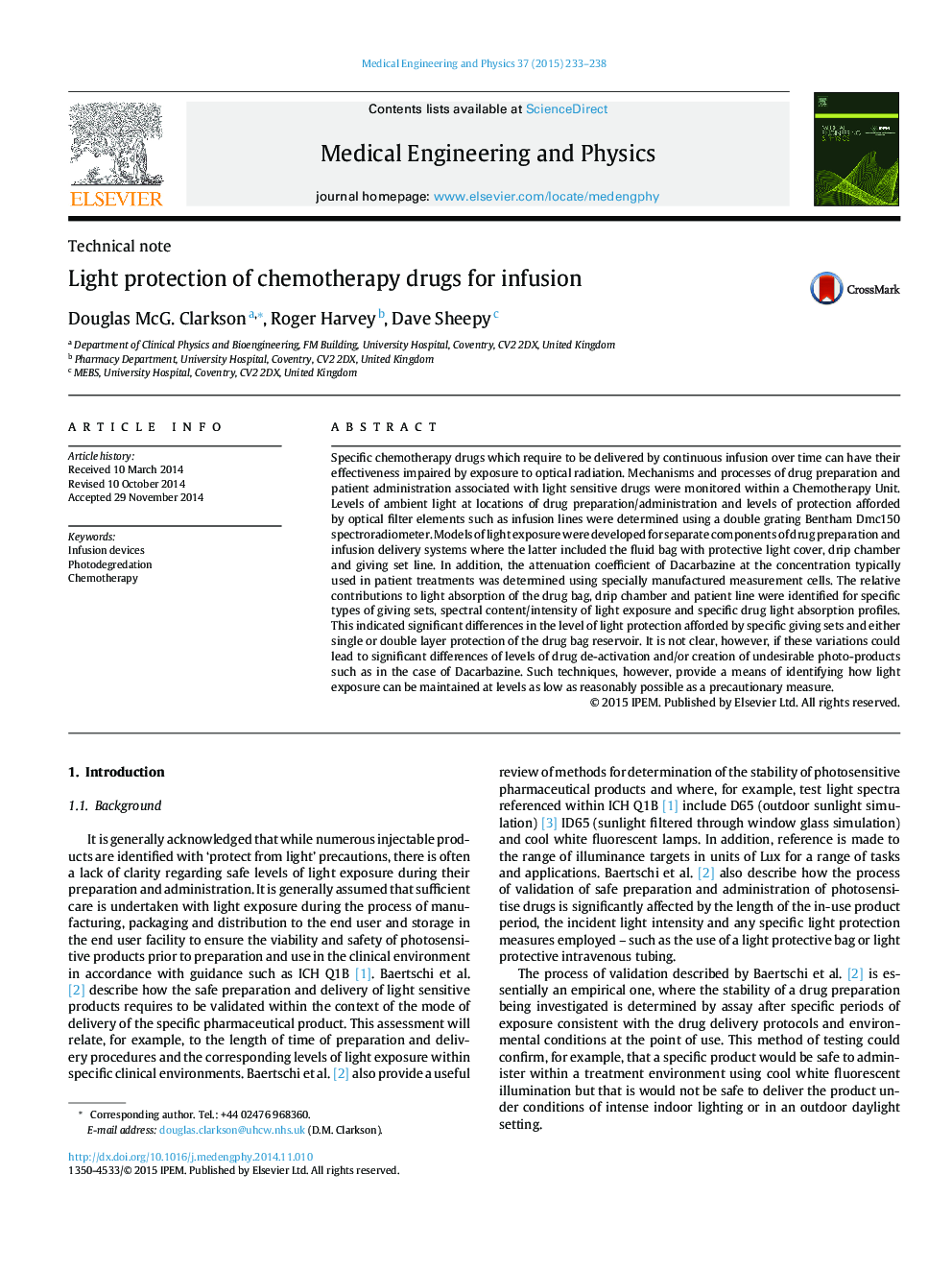| Article ID | Journal | Published Year | Pages | File Type |
|---|---|---|---|---|
| 10435015 | Medical Engineering & Physics | 2015 | 6 Pages |
Abstract
Specific chemotherapy drugs which require to be delivered by continuous infusion over time can have their effectiveness impaired by exposure to optical radiation. Mechanisms and processes of drug preparation and patient administration associated with light sensitive drugs were monitored within a Chemotherapy Unit. Levels of ambient light at locations of drug preparation/administration and levels of protection afforded by optical filter elements such as infusion lines were determined using a double grating Bentham Dmc150 spectroradiometer. Models of light exposure were developed for separate components of drug preparation and infusion delivery systems where the latter included the fluid bag with protective light cover, drip chamber and giving set line. In addition, the attenuation coefficient of Dacarbazine at the concentration typically used in patient treatments was determined using specially manufactured measurement cells. The relative contributions to light absorption of the drug bag, drip chamber and patient line were identified for specific types of giving sets, spectral content/intensity of light exposure and specific drug light absorption profiles. This indicated significant differences in the level of light protection afforded by specific giving sets and either single or double layer protection of the drug bag reservoir. It is not clear, however, if these variations could lead to significant differences of levels of drug de-activation and/or creation of undesirable photo-products such as in the case of Dacarbazine. Such techniques, however, provide a means of identifying how light exposure can be maintained at levels as low as reasonably possible as a precautionary measure.
Related Topics
Physical Sciences and Engineering
Engineering
Biomedical Engineering
Authors
Douglas McG. Clarkson, Roger Harvey, Dave Sheepy,
